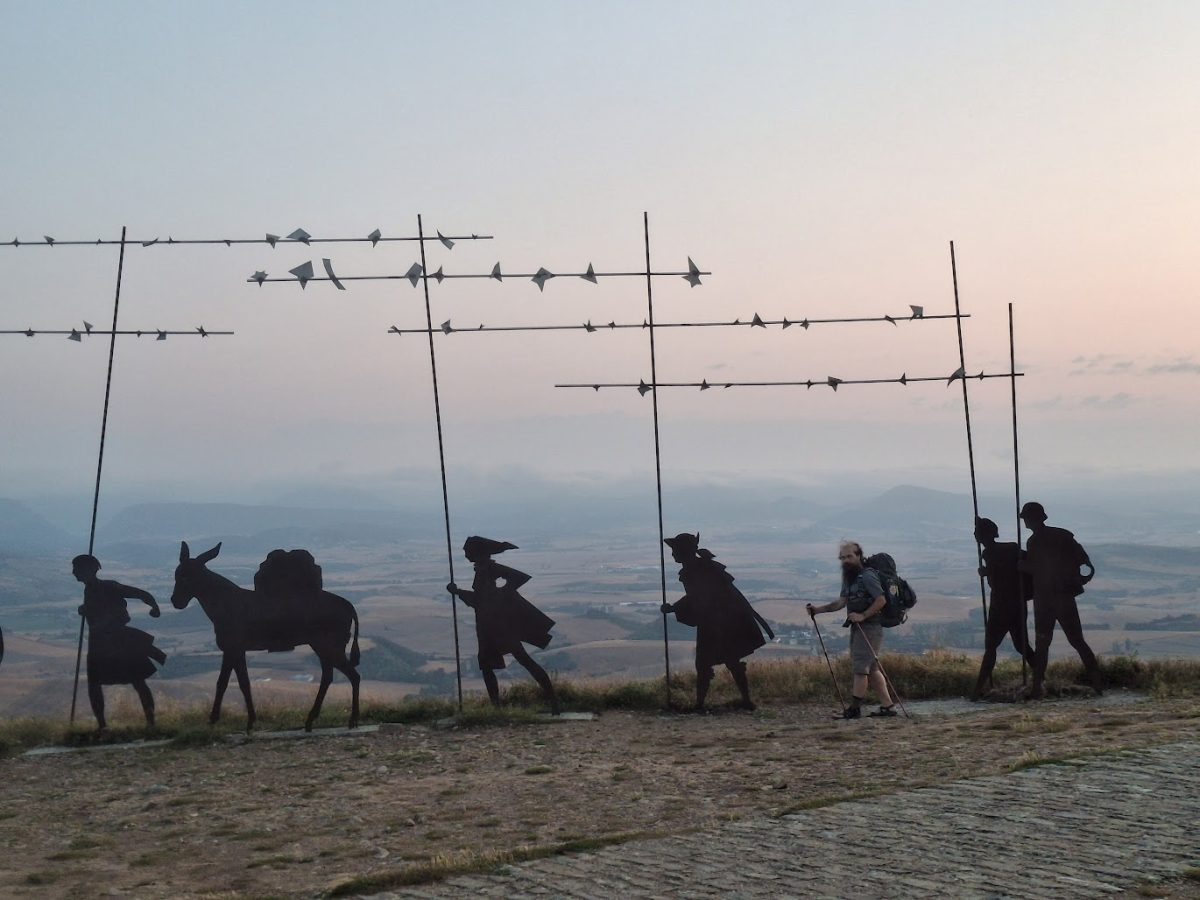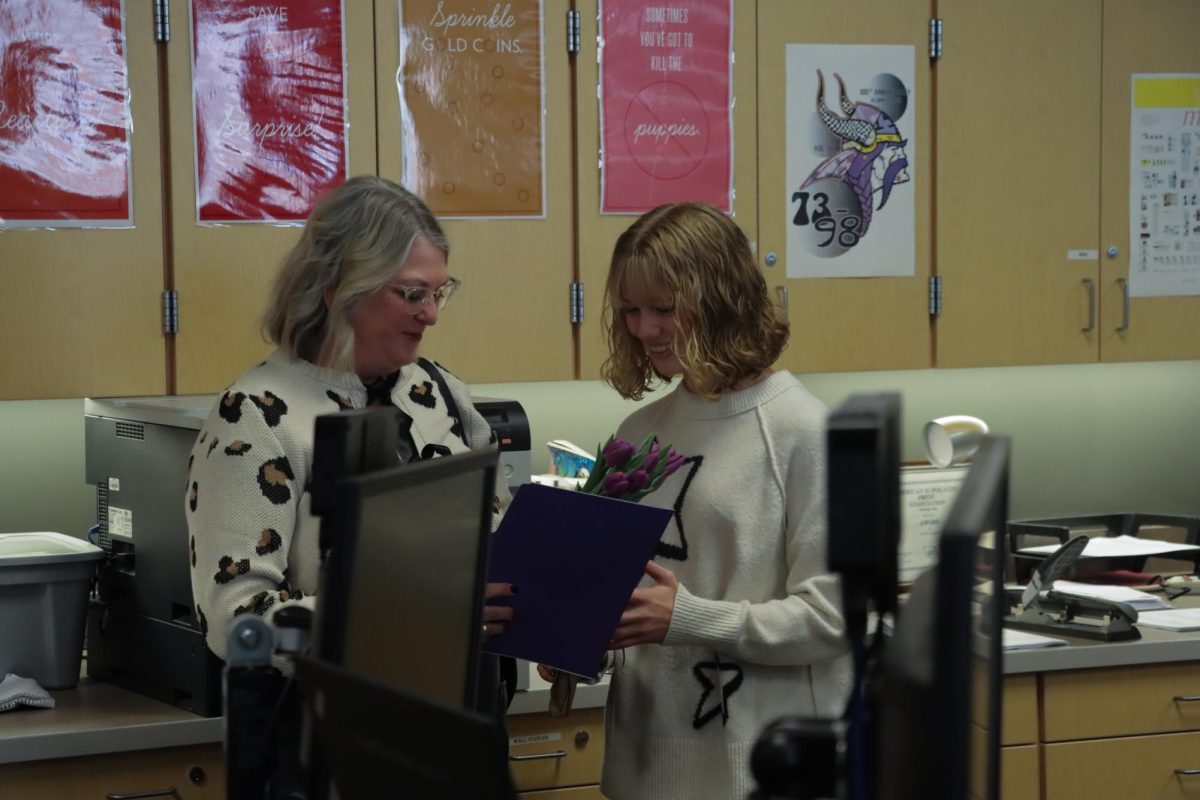The Green New Deal Resolution proposed by Rep. Alexandria Ocasio-Cortez and Sen. Ed Markey Feb. 7 has resurrected the debate around climate change. This increase of conversation has also sparked students worldwide to strike for action on climate change, including one in Tacoma March 15 at Wright Park.
While some argue climate change is a hoax, an October report from the United Nations council warns there are only 12 years until the climate has wreaked total havoc on the globe.
Jan Boll, Professor of Civil and Environmental Engineering at Washington State University, explained what exactly the phrase “global warming” means.
“The earth has a system called the ‘greenhouse effect’ by which it regulates temperatures in the atmosphere. Specifically, water vapor in the atmosphere plays a big role in the greenhouse effect. Without an atmosphere, the earth would be -18 Celsius or 0 Fahrenheit, on average. There are other gases in the atmosphere that contribute to keeping earth’s temperature at a reasonable temperature for us,” Boll said.
As humans have increased industrialization, greenhouse gases have increased in concentration, causing warming. Boll explained what gases have been the major contributors.
“CO2 is a big focus of the reporting, as it has changed the most dramatically, while water vapor has not changed much. Other gases that also have increased include methane,” Boll said.
Associate Professor of Atmospheric Sciences at the University of Washington, Dargan Frierson, explained what greenhouse gases have done to the Earth.
“Global warming has caused more heat waves, melting ice and disruptions to weather patterns like the jet stream [air currents in the atmosphere that are fast flowing and narrow]. Warmer air holds more moisture and this has caused more extreme rainfall events and prolonged droughts. Sea levels are rising, and the oceans are also becoming more acidic,” Frierson said.
Assistant State Climatologist, Karin Bumbaco focuses specifically on Washington’s climate patterns. Bumbaco and her colleagues look at historical records of the weather and climate in Washington and make sure those records remain accurate. Recently, they have noted changes in baseline temperatures, previous temperatures used to compare and current temperatures.
“We’ve certainly seen shifts in the baseline warming, like more 80 degree days, for example,” Bumbaco said. “But what we have seen is an increase in those, what we define as heat events, like overnight temperatures, so how much it cools down at night. It is not cooling down as much as it used to for our observed climate. We see an increase in those kinds of consecutive days, warm, overnight temperatures staying warm. For Western Washington, we’re talking somewhere around the upper 60s, low 70s in terms of degrees Fahrenheit.”
Research by the climatologist’s office has also noted an increase in the average annual temperature observed in Washington State.
“The average across all of Washington State, or average annual temperature, increased about 1.8 degrees Fahrenheit,” Bumbaco said.
While projections show there should be larger changes in precipitation patterns, there has been no substantial changes yet to emerge. However, Bumbaco said there are some changes to expect.
“We have seen that there are some studies that have shown that there has been an increase in heavy precipitation events, like your really wet days for Western Washington,” Bumbaco said. That seems to be something that we have seen happening already. Then we also see a little bit of an increase in our spring precipitation, consistent with what we would expect for climate models but not really a drying summer or changes in another season.”
Boll’s research in water quality has found that lakes are warming. This is due to the warmer air, which in turn produces more rain than snow, which leads to warmer lakes or streams.
“If our air is warming, and we receive more rain than snow, we are starting to see warmer water. If anything is alive in the water, it is affected by it and certain native species cannot thrive due to [the] competition of new or different species. So, that affects the biodiversity in the waters,” Boll said.
The length between the frost-freeze seasons is also getting longer. This means that the length between the last freeze of the season and the first freeze of the fall is longer by approximately 30 days longer in the Puget Sound. Bumbaco explained what effect a shorter window for snow may have on water supply.
“A lot of our water is stored in our snowpack in the Olympics and Cascade Mountains. We get our rain down here at the lower elevations, snow in the mountains and then it’s stored there through the winter, so that when the spring and summer come and that snow starts to melt, that water is able to be used as water supply during our dry season,” Bumbaco said. “For agriculture specifically and [the] Yakima Valley, that water is also able to feed our streams for fish to migrate where they need to go when our precipitation is much less than our dry summer.”
April 1 is an important date in the world of climate. Bumbaco and her contemporaries use that date as a stopping point for expecting more snow in the mountains, as well as measuring how much is left after the season.
“Looking at what that snowpack is on April 1, we have seen decreases in that amount over the historical record pretty consistently throughout the Cascades of Washington, which is really bad news in terms of water supply, particularly for agriculture,” Bumbaco said.
In regards to the snowstorm in February that dropped approximately a foot of snow around Western Washington, Bumbaco says this isn’t necessarily due to climate change.
“The distinction between weather, shorter-term variability in conditions like temperature, precipitation, wind, clouds, etc and climate, long-term average temperature and precipitation conditions over at least 30 years, is important here,” Bumbaco said. “It was a really unusual pattern in terms of the length of a cold… but we get those every decade or so. Our climate change projections don’t really indicate that that’s going to become a new normal.”
However, this topic has been the focal point of a recent debate in the climate world following conflicting research.
“There’s a little research happening, and it’s still out for debate. A lot of it has been focused in the eastern United States because they’ve had some really bad, cold winters in recent years and that’s whether the warming of the planet will kind of make the jet stream more wiggly. When the jet stream wiggles around, it can scoop further south or come further south over the United States, whether it’s western U.S. or the eastern U.S., bringing this really cold or thick air and having that in place and having the precipitation follow snow,” Bumbaco said. “But then there’s been other research that says ‘Actually, we don’t think that’s gonna happen with climate change,’ so that’s really a big area of study that’s currently a debate in the climate science right now. But overall, I would expect and I think most of my colleagues would expect fewer snow events in a warming world.”
While some may say climate change is too big of a topic for individual changes to make an impact, Boll says this mindset is false.
“While the problem is very big, as it is a global problem, a lot of actions locally will add up to a global effect. It is sometimes depressing how little we think we can do but it can add up if we do many small things. Another thing is to make your voices heard so that those making the big decisions hear them,” Boll said.
Frierson gave an example of how one can make an impact.
“There are a lot of great organizations that you can get involved with. For instance, I know a lot of UW students who are involved with the Sunrise Movement, an organization of young people who have helped to catapult climate change into the national political debate over the last six months,” Frierson said.
While some in the political spotlight have brushed climate change off as a hoax, Boll explained why she believes this mindset is incorrect.
“Many people do not know that global warming was already analyzed in the time of Einstein by the Swedish scientist Svante Arrhenius. His calculations from the early 1900s are quite close to what we are measuring. In 1938 another scientist, Guy Callendar, did the same calculations and came up with the same estimate,” Boll said. “Then James Hansen repeated the calculations with a computer in the 1960s and also found the same. So, for those who think climate change is something invented recently, please think again.”
Significant changes in the environment may lead people to ask — “what’s being done to fix this?”
From elevated temperatures to increased natural disasters, environmental changes are becoming more common.
Although individuals may do their part to limit waste and protect the world, Stephanie Williams, Climate Program Specialist at the Nature Conservancy, believes climate change is a large concept.
The Nature Conservancy is the largest conservation organization in the world, present in all 50 states, as well as 70 different countries. Their involvement in climate change includes interacting with partners, supporting bills and informing the public about the changes around them.
“We need regulatory measures and we need economic and marketplace measures,” Williams said. “We are reaching what scientists are referring to as a tipping point of these sort of impacts that we’ll see from human-caused climate change. The recent IPCC [Intergovernmental Panel on Climate Change] report says we have 12 years to get a plan in place to get off of fossil fuels or else we’re going to go past this tipping point. It’s going to be really, really hard to recover,” Williams said.
Reaching this tipping point could mean more catastrophic storms, rise in sea levels, droughts, floods and even civil unrest. The increased pressure to take action is also felt by the Washington State Department of Health. Climate and Health Coordinator Marnie Boardman believes an informed public can minimize damages.
“The Department of Health and other agencies in the public health system are doing a lot of work to increase the public’s awareness about [the] health effects of climate change. It’s important for us to be talking about how climate change impacts health in general and encourage people to understand what that means in their geography and communities,” Boardman said.
The Department of Health and their partners use evidence to inform public health action and uses that data to improve public health surveillance and prevention of major health effects. They also analyze the data to understand different risks and understand the distribution of health problems across populations that may be affected by climate change.
“Extreme weather can have [a] disproportionate impact on particular populations that have health inequalities. We want to put in place policies and programs with prevention work on the populations and communities that are most highly impacted [by climate change],” Boardman said.
Andrew Wineke, Communications Manager at the Washington State Department of Ecology, also believes the health effects of climate change can be more detrimental to some than others. Air pollution can target those with preexisting respiratory issues and also can lead to acid rain.
“Different types of air pollution have different health effects. What’s true for all air pollution, though, is that it hits the most vulnerable people the hardest. The elderly, the very young, pregnant mothers and people with pre-existing health and breathing difficulties are much more likely to be affected by air pollution than healthy people,” Wineke said.
There are both federal and state standards for air pollution in order to keep the air safe for people. It can be hard for scientists to determine what a “safe” level of air pollution is that will minimize health repercussions.
“By definition, pollution isn’t healthy. Determining what level poses a serious risk to human health can be complicated, and we have toxicologists that study this question. For some types of air pollution, Ecology uses the federal standards set by the U.S. Environmental Protection Agency. However, when it comes to the particulate pollution found in wood smoke, we feel the national standards aren’t protective enough and we have set a more stringent standard for Washington state,” Wineke said.
Although overall air quality in Washington has been improving, Wineke says particulate pollution is an increasing concern for the Washington State Department of Ecology. They track carbon pollution in search of a way to reduce it.
“Carbon pollution is what drives climate change, which will have serious effects on Washington’s environment, economy and public health. Ecology is doing its part –- we’ve already reduced emissions significantly by improving the energy efficiency at our offices, driving electric cars and using energy from renewable sources like solar and wind,” Wineke said.
The Nature Conservancy is also concerned about carbon and different emissions in the environment. The Washington chapter is supporting work in the state legislature to get bills passed that promote natural climate solutions. In this legislative session, there are five main bills going through that can help cut the state’s emissions and meet state climate targets.
“There’s a ban on hydrofluorocarbon. Hydrofluorocarbons are very strong greenhouse gas emissions and they’re stronger than regular carbon dioxide. There’s a bill for technology making carbon neutral and cleaner. There’s an electric vehicle and transport bill. That would be building infrastructure for electric vehicles and more charging stations,” Williams said. “It would incentivize purchasing electric vehicles and promoting public transportation.”
Those three bills, if passed, could dramatically decrease emissions and produce cleaner carbon. The big two bills that the Nature Conservancy is supporting has to do with 100 percent clean energy and a carbon standard for cars that aren’t electric.
“That [100 percent clean energy] would be a regulatory measure that puts pressure on utilities, oil and gas to transition to clean energy by a set date,” Williams said. “The last one, that’s probably the most contentious of all of them, is a low-carbon fuel standard. The idea isn’t necessarily going all electric but how can we have fuels that have a lower carbon intensity.”
These bills have the ability to achieve large-scale changes and regulations on pollutants and chemicals. Williams believes legislators may be more likely to vote for these bills if they hear from their constituents.
“A lot of times elected officials will only need to hear from about 100 people for them to reconsider an issue. Call your legislators and be really vocal to them because that matters,” Williams said.
Simply talking about climate change and how it affects the environment can bring awareness to the issue and may lead to more action being taken to stop climate change.
“I like to tell my friends and family that aren’t working on climate that they can really talk about it. Let your neighbors know that it’s something you care about, let your friends and your family know that it’s something that you care about. Have that conversation and figure out where they stand on it,” Williams said.



